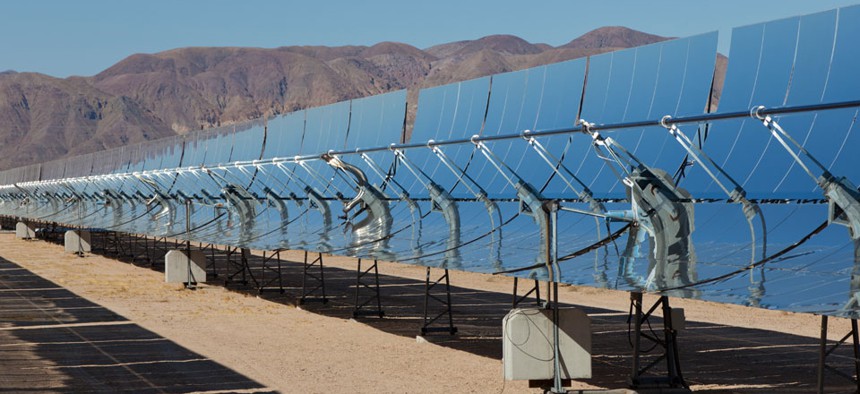Green Energy Loan Program Is 'Open for Business' Again

Mike Flippo/Shutterstock.com
Solyndra failure derailed the program for years.
The Energy Department's green technology loan program, which has faced years of political attacks from congressional Republicans, is rumbling back into gear.
The department's Loan Programs Office is preparing to solicit new applications for renewable- and nuclear-energy-related projects, and Friday marks the initial deadline for those seeking up to $8 billion in loan guarantees available for coal, gas, or oil-related projects that cut or trap carbon emissions.
"As the [Energy] secretary has mentioned, and it's firmly our belief at LPO, we are very eager to get all the solicitations we can out on the street and start doing the great work of really funding these projects," said Peter Davidson, the program's executive director.
He said last year's call for applications for fossil-energy projects, the program's first solicitation in almost three years, is "a real sign that the LPO is back open for business with the firm support of the secretary, the firm support of the administration."
The green technology loan program was first authorized in a bipartisan 2005 energy law and expanded in the 2009 stimulus law that supported an array of renewable-energy projects and companies, including the ill-fated solar-panel manufacturing company Solyndra that collapsed in 2011.
A bipartisan 2007 law authorized loans for advanced technology vehicle manufacturing, a program that's also under Davidson''s office.
Energy Secretary Ernest Moniz told reporters this week that the new solicitation for renewable-energy loan guarantee applications would occur "relatively soon."
Davidson, who took the helm of the program last year, said the department is mindful that it will have much less money than the $16 billion worth of loan guarantees provided through the stimulus-backed portion of the program.
The first round of renewable-energy loan guarantees included more than $10 billion in lending for multiple types of solar-power generation projects.
"Those were like $5 billion bets which catalyzed an industry. Now we're not going to have $5 billion. So part of what we are thinking is, how can we get that same type of catalytic effect with less money?" said Davidson, a former New York State official who has also worked at Morgan Stanley.
"Maybe there are different kinds of niches we look at in the energy world, where a lesser amount of money than $4 billion or $5 billion per area can have a catalytic impact," said Davidson in the interview earlier this week.
Department officials caution that they're not prejudging the types of projects they'll seek to support in the next round of renewable-energy loan guarantees. But Davidson did share his thinking about some of the possibilities, such as projects that help integrate renewable power onto electric grids.
"We are all just kicking around a bunch of ideas with people in industry, and some of the ones mentioned are things like: We have funded so much in generation capacity before, and now renewable generation is really just accepted, and it is happening everywhere," Davidson said. "[But] there are huge issues still about the integration of renewables into the grid. So grid integration is a very interesting area."
He cited demand created by the state of California's recent requirement that big utilities increase their ability to store power from renewable-energy sources that are a growing part of the state's power mix.
"The thinking among some people who have looked into this is, there is going to be a big demand pull by the utilities for storage technologies and storage companies, and those are all going to be new and innovative because storage doesn't really exist on the grid, and there is a huge mandate in California," Davidson said.
The loan program is diving back into renewables after years of attacks from Republicans over the failure of Solyndra, which had received a half-billion dollars in federal loans, and a few other Energy Department-backed flops.
Moniz, however, has repeatedly defended the program, noting that the overall portfolio of more than $30 billion in loans has performed well.
"Any rational view of that portfolio is that it has been a major success in doing exactly what it ... is designed to do in terms of first-movers of technologies at commercial scale," Moniz said at an Energy Department summit Wednesday.
(Image via Mike Flippo/Shutterstock.com)






